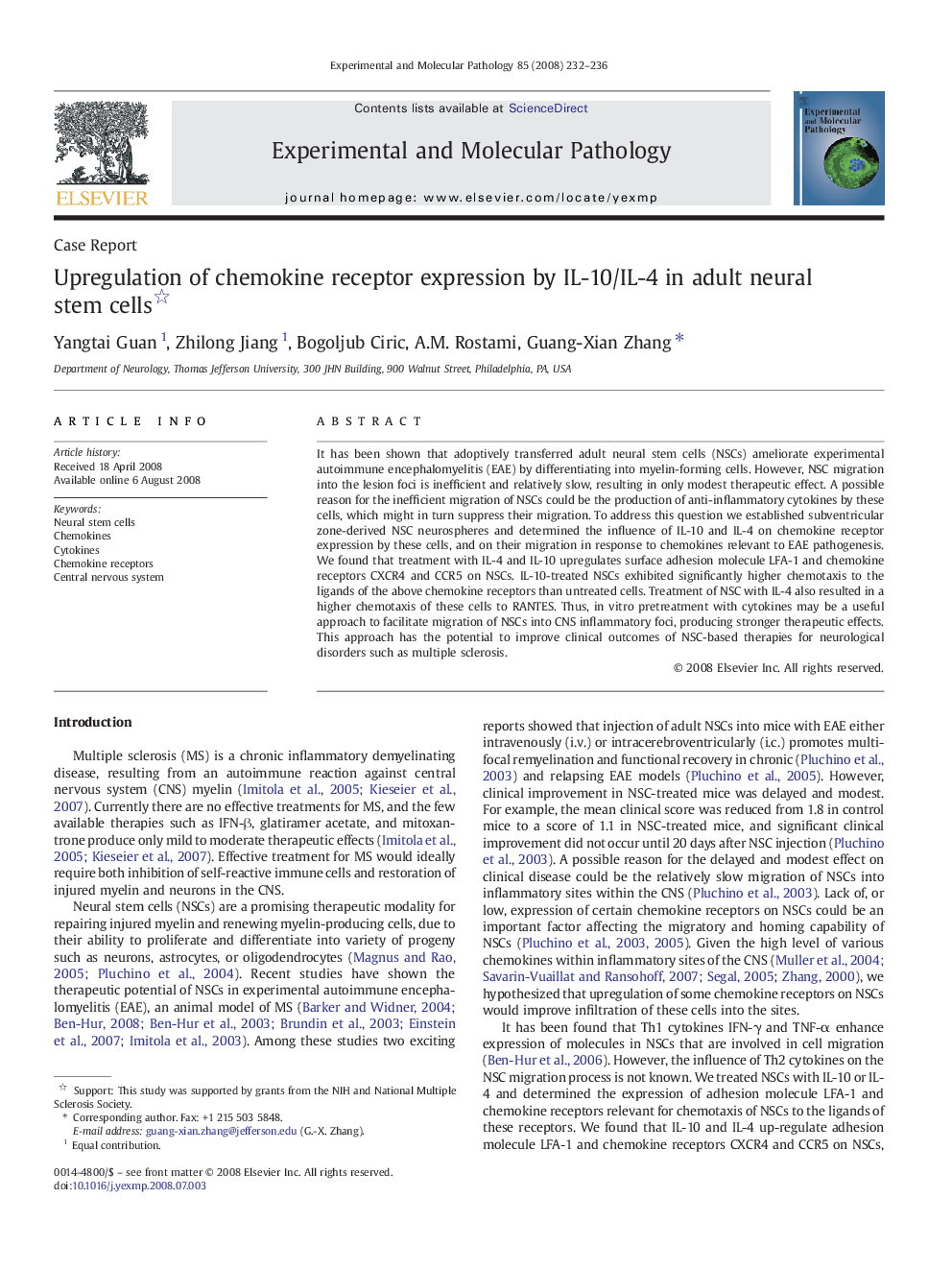| کد مقاله | کد نشریه | سال انتشار | مقاله انگلیسی | نسخه تمام متن |
|---|---|---|---|---|
| 2775864 | 1152348 | 2008 | 5 صفحه PDF | دانلود رایگان |

It has been shown that adoptively transferred adult neural stem cells (NSCs) ameliorate experimental autoimmune encephalomyelitis (EAE) by differentiating into myelin-forming cells. However, NSC migration into the lesion foci is inefficient and relatively slow, resulting in only modest therapeutic effect. A possible reason for the inefficient migration of NSCs could be the production of anti-inflammatory cytokines by these cells, which might in turn suppress their migration. To address this question we established subventricular zone-derived NSC neurospheres and determined the influence of IL-10 and IL-4 on chemokine receptor expression by these cells, and on their migration in response to chemokines relevant to EAE pathogenesis. We found that treatment with IL-4 and IL-10 upregulates surface adhesion molecule LFA-1 and chemokine receptors CXCR4 and CCR5 on NSCs. IL-10-treated NSCs exhibited significantly higher chemotaxis to the ligands of the above chemokine receptors than untreated cells. Treatment of NSC with IL-4 also resulted in a higher chemotaxis of these cells to RANTES. Thus, in vitro pretreatment with cytokines may be a useful approach to facilitate migration of NSCs into CNS inflammatory foci, producing stronger therapeutic effects. This approach has the potential to improve clinical outcomes of NSC-based therapies for neurological disorders such as multiple sclerosis.
Journal: Experimental and Molecular Pathology - Volume 85, Issue 3, December 2008, Pages 232–236